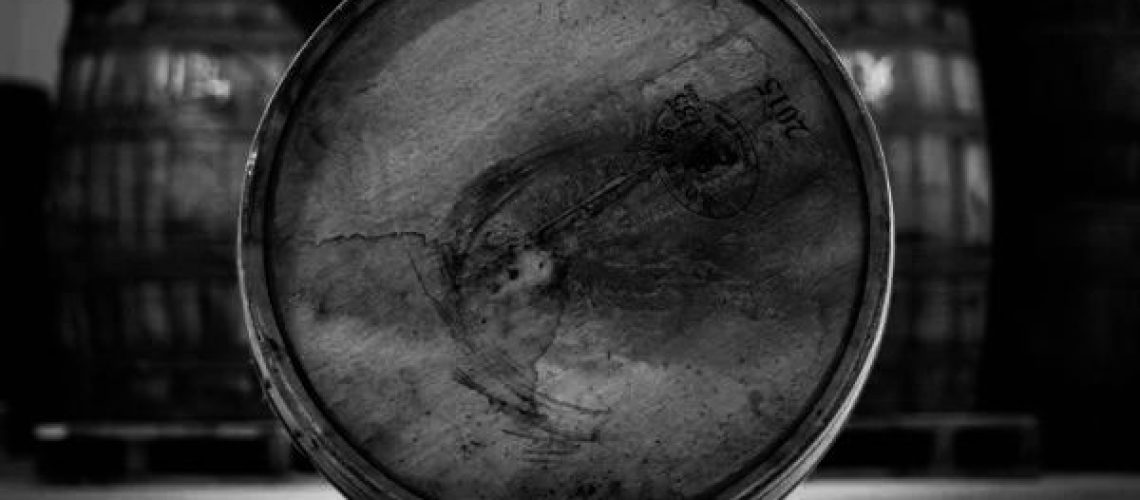The first evidence of alcoholic distillation came from Mesopotamia some 4,000 years back. Other ancient civilizations, like the Indians, Chinese, Greeks and Romans, followed suit. Suffice it to say distillation of spirits is a well-understood process – customized by master brewers at large breweries, including the Scotch and Bourbon makers on either side of the Atlantic.
The mix of grains used to start the fermentation process is usually a trade secret. The questions about quality and distinctive taste imparted to alcohol post-fermentation centre around specific tweaks to the process, such as the type of stills employed, the still material and the type of ageing process that is used. This article will deal with another such topic, namely, the number of distillations that whisky goes through. More specifically, do more distillations really produce a “smooth” taste as some claim?
In this context, let’s also examine why some whiskies are double-distilled, while others are distilled thrice?
What Happens During Distillation?
Distilled spirits are produced from fermented grains (e.g. barley and malts for Scotch whisky, at least 51% corn for Bourbon) and other elements. Fermentation refers to the decomposition of organic materials which contain carbohydrates, it produces ethanol (C2H5OH) along with by-products such as a number of congeners and carbon dioxide. Some of these by-products are harmful or odious, with effects ranging from strong, unpleasant odours/tastes to toxicity, while others may actually add to the flavour. Distillation is the process to screen out the “bad” compounds while retaining the good ones.
Ethanol boils at 173.10F, a lower temperature than water. To start the process, a “wash” of water and fermented grains are fed into the bottom of a pot which is being heated evenly – creating evaporated particulates that can be condensed against a cool surface and collected in a different container. The first distillate often called “low wine”, can be distilled further to increase the concentration of ethanol and decrease “impurities”.
Distillation Methods and Materials
There are two main types of distillation equipment: (a) Pot Stills, which are used to produce whisky in batches and must be cleaned out prior to reuse, and (b) Continuous Stills, which are tower stills up to 8 feet in diameter stacked on top of one another, which can run continuously. Most Scotch whisky is prepared using pot stills, while most American Bourbon manufacturers use continuous stills for the most part (with some exceptions).
While steel, which is a cheaper material and easier to clean, may be used in some cases, most Scotch and Bourbon manufacturers use Copper as the still material. Copper has been found to have many helpful properties, which include malleability, the ability to supply uniform heat throughout its surface, and no reaction with the spirits.
Added benefits of copper include its ability to remove volatile Sulphur compounds – such as dimethyl trisulphide (DMTS) and ethyl carbonate – which produce noxious odours in the distillate, along with certain microbes that form during fermentation. Copper absorbs yeast cells formed during fermentation and helps in the formation of esters (see below).
The point is that the more often the spirit-laden liquid touches the copper insides during a distillation process, it is likely gaining some flavours and eliminating harmful compounds from being carried through to the final product.
Compounds Produced During Distillation – Helpful and Harmful
Besides ethanol and water, there are a vast number of naturally occurring, biologically active “congeners” that are produced during the fermentation and ageing process. Congeners produce powerful reactions in our body and brains.
Harmful congeners are often directly responsible for heartburn, hangovers or even more serious health conditions. The two most harmful consigners – methanol and acetaldehyde – produce toxic side effects. Other congeners, such as furfural and fusel oil, are less harmful and may even add a bit to the flavour and aroma of the finished product.
Then there are a host of “good” congeners, esters being a class of them. These are clearly desirable attributes, adding the flavours, aromas and tastes that our we can sense, such as the scents of wood, smoke, grass, cinnamon and citrus fruits.
Clear liquors (gin, vodka, tequila etc.) have fewer congeners, while dark liquors like whisky contain more. Getting rid of harmful congeners while retaining some of the neutral, flavour-enhancing ones, is the trick.
How is Distillation carried out to Separate out the Various Compounds?
The first distillate, when it comes out, is relatively high in noxious odours and harmful impurities, which is why Scotch whisky, by law, is at least twice distilled.
Making “Head” and “Tail” out of It – The Foreshot, Feint and Middle Cut
As the evaporated liquid condenses and is deposited in the next still during distillation, the focus is on choosing liquids rich in compounds that are produced at the right temperature.
Distillers will reject (a) the “Foreshot” or “Head” liquid produced at the very beginning in lower ranges of temperatures, and (b) the “Feint” or “Tail” liquid produced at the end (in the upper range). Choosing the right “cut” is a skill honed with practice by master distillers.
This is possible due to the differentiated boiling points of the various compounds.
In particular:
Methanol, acetone and ethylacetate are removed at boiling points lower than ethanol (e.g., methanol evaporates at 148.50F). These compounds dominate the foreshot.
Upper ranges of temperatures yield long-chain alcohols which dominate the feint.
The central “cut”, which contains ethanol and water, but also retains the aroma and taste-producing compounds that had been produced during fermentation, is the desired output.
Double vs. Triple Distillation – What’s the Difference?
The first distillate produces a relatively weak ethanol content, typically around 8% alcohol by volume (ABV), which is known by “low wine”. Besides the low ABV, there are still substantial trace elements of various congeners that are harmful to humans and contain noxious odours/tastes. This is especially true of dark liquors, which are then subsequently aged for 10+ years, adding more compounds into the mix.
The second round of distillation will get rid of harmful impurities. This is one of the reasons why Scotch whisky must be at least double distilled, by law. What about subsequent rounds?
Irish whisky is typically triple-distilled as a matter of course, the theory being that an additional round of distillation in copper stills will make the whisky “smoother”, that is, get rid of the afterburn on the tongue and add more fruity, tangy flavours to the spirit. Vodka can be distilled four or five times – mainly to create a “pure” liquid that does not give you hangovers.
Without getting enmeshed in details, triple distillation usually means adding a third pot (an exception is noted below) in between the first (wash) still and the final (spirit) still. This middle still, known as the feint still, has a complex process of re-distillation.
Typically, the “weak feint” (about 8% alcohol by volume) is distilled to produce “strong feints” (20%+ ABV), which are passed on to the spirit still. However, there is a continuous process of feeding in the foreshots from the top and the weak feint residue back into the feint still continuously, to continue re-purifying the contents while drawing as much ABV as possible in the resulting strong feint.
The spirit still not only receives stronger feint, with fewer impurities, than the average concoction, but the typical process would also have them feeding in their own (relatively less) strong feint and foreshots back into the still to be continuously redistilled. This can get the ABV up to levels above 80-82% – and the impurities reduced – by the time the finished spirit goes out to be prepared for casking.
The Case for Double Distillation – Scotches and Bourbons, with Exceptions
We saw how triple distillation can be used to strengthen alcohol content and reduce impurities through the extra round of distillation. On the other end of the spectrum, though, successive distillations will rob some of the smoky, peaty and heavier flavours and mouthfeel that whisky drinkers often crave. For this reason, whisky makers are often not keen on the third distillation.
Typical Ways to Make Scotch and Exceptions
Single Malt Scotch Whisky tend to be purists in the matter of double distillation, namely, they prefer not to distil thrice. To them, the heavier, oily and spicy flavours are important, more so than the fruity accentuations which grow with progressive distillation steps. Also, the conventional wisdom is that some congeners such as furfural and fusel oil actually add to the aroma, taste and mouthfeel. There are a few exceptions who triple distil, the most notable ones being the Auchentoshan and BenRiach breweries. Even these breweries do not produce all their product as triple distilled, instead, they will produce such special products (such as BenRiach 10-Year Old Triple Distilled) a few times a year.
BenRiach uses an interesting system. They have two pot stills installed, clearly for double distillation – but they use the second still as the combination feint and spirit still, running the foreshots and the feints through them twice before sending out the final spirit.
Typical Ways to Make Bourbon and an Exception
Bourbon is on the one hand produced in continuous stills, which makes it easier to filter out heavier and harmful compounds – the vapour rising upwards due to heat being supplied from below is being taken through multiple filters, with each higher filter being slightly cooler than the one immediately below it – and also, the sour mash style of bourbon actually relishes some of the tanginess produced by leaving in some impurities in the low wine, through the process of filtration. For this reason, most Bourbon is distilled twice, once in a column (“beer”) still and then again in a direct copper still (often called a “doubler”, sometimes a “thumper” if the still is steam heated and produces a thumping noise).
One of the known exceptions for bourbon is Woodford Special Reserve, which produces a significant range of triple distilled products. The resulting product has citrusy aromas that give their bourbon a distinct flavour.
Bottom Line – Different Reasons to Stop at Double Distillates
While Scotch and Bourbon are both typically double distilled, the arguments are slightly different for the two types of whisky.
In the case of Scotch, the cost is not the factor. But brewers the heavy, oily and spicy taste is important to retain, while citrusy flavours are less important. It is also the case that brewers fear that the long interaction of the fresh whisky with sherry or bourbon casks while ageing will “kill” the natural flavours of the distillate – so they do not want the distillate to be too weak taste-wise when it goes into the barrels.
In the case of bourbon, several factors work together. First, bourbon does not command the same price point as scotch, so adding more costs along the way (both time and material) is a problem. Second, due to the continuous stills with multiple layers, the distillation of bourbon actually catches more impurities in the beer still than the scotch does in its wash still. Third, the sour mash label of bourbon is often a tribute to the tastes of bourbon drinkers, a taste that the breweries would like to retain as much as possible.
Double vs. Triple Distilled – Which is Better?
In the discussion above, not much mention has been made about the “smoothness” of triple distilled whisky. That’s because the jury is still out on the matter. Reducing the after-burn may be possible due to less harmful congeners, but there we are talking about burn down the oesophagus – not at the back of the tongue. What we can say is that, smooth or not, additional distillation will tend to produce more citrusy flavours and aromas compared to double distilled whisky, which will tend to be more heavy, oily and spicy.
Let’s leave it at that. Remember, the ageing process does a whole lot in terms of adding and altering the flavour, taste and aroma of the final liquid you sip.


